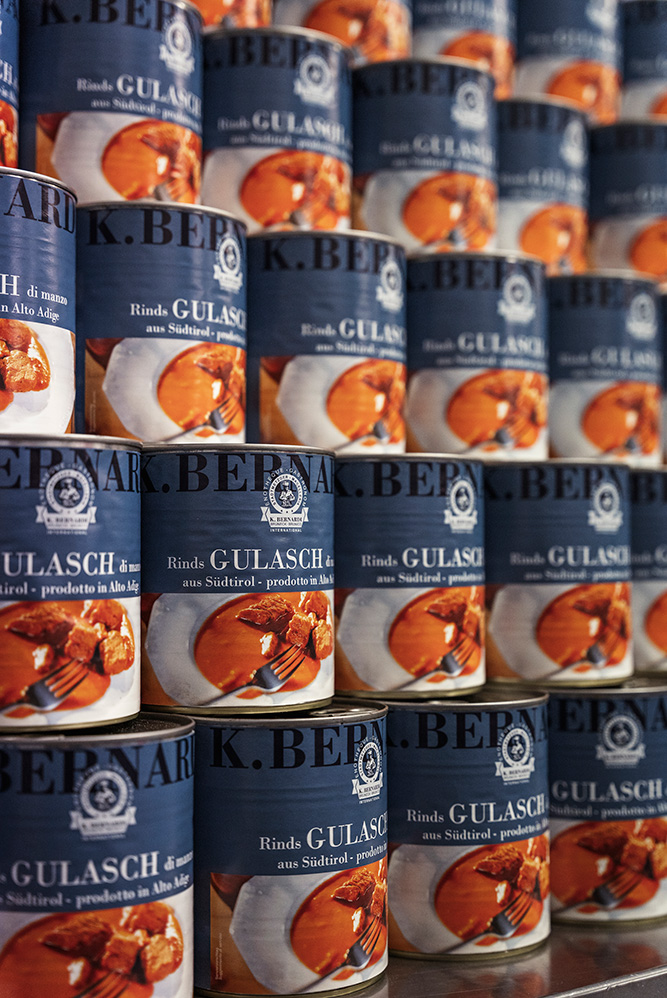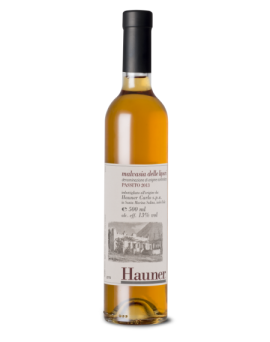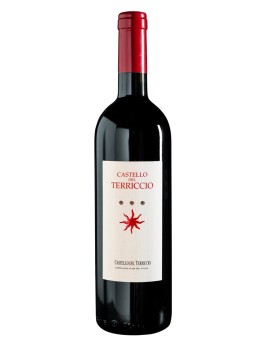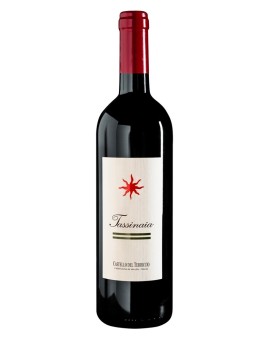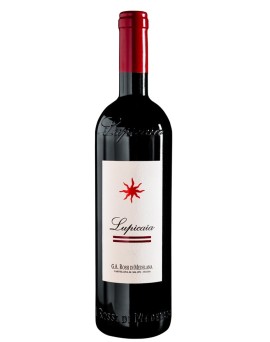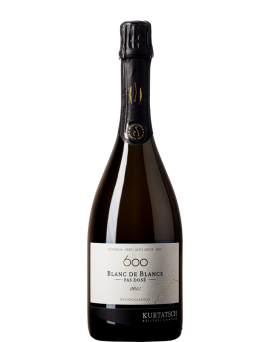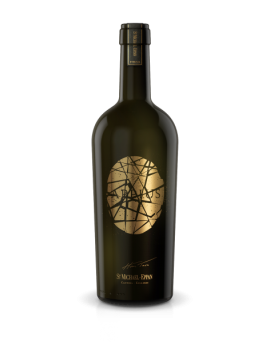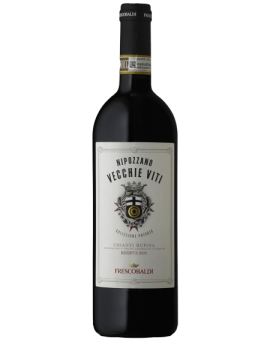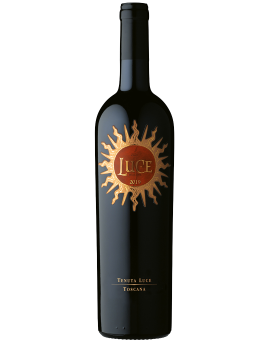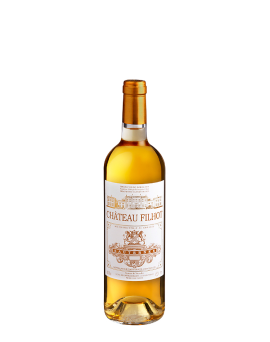Basket
0
Active filters
Malvasia Lipari DOC Passito...
Malvasia delle Lipari<br />DOC passito<br /><br />THE COMPANY<br />A passion for oenology and for Malvasiadelle Lipari as the ultimate challenge of an intense life studded with interests. This was the spirit with which Carlo Hauner embarked<br />on his adventure in the Aeolian Islands in 1963; from painter to internationally renowned designer, he started wine production after restoring ancient terracing on the island of<br />Salina. His small revolutions in the cellar fascinated experts, starting with Veronelli, and brought Hauner's Malvasia to the tables of prestigious restaurants, in Italy, France,<br />the United States, Great Britain and Japan. In the 1980s, with the construction of a modern cellar, production was expanded, and alongside the Malvasia, Salina Bianco,<br />Salina Rosso and Antonello were born, a product of great lineage aged in barriques. aged in barriques. Since 1996, it is the son Carlo Junior together with his sons Andrea<br />and Michele who run the company and produce two versions of Malvasia delle Lipari: natural and raisin.<br /><br />CHARACTERISTICS<br />VINE: Malvasia delle Lipari 95%, Corinto Nero 5%.<br />CULTIVATION : espalier<br />HARVEST : late and withering on 'Cannizzi' for 15/20 days<br />VINIFICATION : skin contact and vinification at controlled temperature<br />MATURATION : Temperature-controlled tanks<br />AGING : 6 months in bottle<br />TASTING NOTES<br />Amber colour with vivid highlights, bright and transparent, excellent consistency.<br />Rich nose with fruity hints of dried figs, dates, ripe apricots, honey and sweet spices.<br />sweet. Mouth marked by a velvety softness, sweet but not cloying, supported by great flavour. supported by great tastiness.<br />
Price
€38.90
Champange Dom Pérignon...
The perfect harmony<br /><br />Dom Pérignon creates only Vintage Champagnes, made from the best grapes selected in a single vintage.<br />He never stops reinventing himself, to always interpret the exclusive character of each season to the best of his ability. It refuses to compromise, renouncing the creation of<br />the Millesimato when the vintage is not up to scratch.<br />After an elaboration of at least eight years, the wine achieves perfect balance, the House's finest promise. This is Dom Pérignon Vintage, the Plénitude of Harmony.<br /><br /><br />EXPLOSIVE HARMONY<br />For Dom Pérignon, the assemblage is the grand rendezvous of Champagne elaboration. It is the creative gesture that, starting in the vineyard, through a search for intuition<br />and creation, draws on contrasts and paradoxes, juxtapositions and complementarities, and thus reveals its personal truth for each vintage.<br /><br />It is a blend that invites an unexpected inner dialogue. Today, Dom Pérignon Vintage 2012 and its explosive harmony stand out.<br /><br />The unpredictability of the 2012 seasons, their authority and generosity, composed a singular olfactory landscape of extraordinary variety. An unparalleled richness and<br />diversity of fruit: in 2012, every grape variety, every region, every village, every plot of land reached the peak of its potential, giving rise to a vintage that combines all<br />polarities.<br /><br />In a blend of intensity, restrained tensions and extreme contrasts, the 2012 Dom Pérignon Vintage assemblage reveals a singular structure, vibrating to the rhythm of a<br />controlled energy, channelled by the acidic and bitter notes, which bursts and shines. An explosive harmony.<br /><br />THE NOSE<br />The nose is complete and voluble, an interweaving of flowers and fruits, followed by the union of vegetal and mineral notes. The bouquet is tactile, a discreet invitation to<br />follow the powdery trail of white flowers, edged by the sweetness of apricot and mirabella, and then arriving at the freshness of rhubarb and mint, to the minerality of ash.<br />White pepper.<br /><br />THE PALATE<br />It is energy that dominates the palate. After a pleasant opening, the wine quickly becomes vibrant and then literally explodes. The effervescence is rampant, the sensation is<br />tonic. The finish, which converges on acidic and bitter notes, narrows and becomes penetrating, leaving its mark, marked by ginger, tobacco and toasted aromas.<br />
Price
€351.50
Castello del Terriccio 2016...
CASTELLO DEL TERRICCIO 2016<br /><br />Denomination: I.G.T. Rosso Toscana (Castello del Terriccio)<br />Producer: Castello del Terriccio<br />First vintage: 2000<br />Grapes: Syrah, Petit Verdot<br />Analytical Data: 14% Vol.<br />Soil type: The soils are rich in iron minerals with the presence of stones and fossils. The perfect slope towards the Mediterranean sea, a unique reflection of the sun, a<br />gentle coastal breeze and plenty of sunlight promote a unique and exclusive ripening.<br /><br />Training system: Spurred Cordon<br />Planting density: 3,600 vines/Ha. for old vineyards; 5,600 vines/Ha. for new vineyards<br />Climatic trend: 2016 was certainly one of the most regular vintages of the last decade. Rainfall met the vines' needs punctually: abundant in March, regular in May and June,<br />important at the end of July and, finally, a warm and sunny August and mid-September. Temperatures were optimal: a mild end to the winter that had caused concern was<br />then regularised by a tenably cool spring that slowed down the development of the bunches, which then benefited from the hot but not torrid summer, with significant<br />temperature swings. Cluster growth was regular and optimal, production was good and ripening was perfect.<br /><br />Harvest period: Harvesting was strictly by hand and took place for the Syrah and Petit Verdot grapes from mid-September. After an initial selection in the vineyard when<br />harvested by hand, the grapes are carefully selected a second time on arrival at the winery on the sorting table.<br /><br />Winemaking notes: After manual selection on the sorting table, the grapes are gently destemmed and pressed, taking care not to break the skin of the berries. Alcoholic<br />fermentation takes place in stainless steel open-cap fermenters at a controlled temperature, with maceration of the grapes, for about 20 days. Daily dèlestages allowed the<br />extraction of the aromatic bouquet and the right balance<br />tannicity, with important structure that will allow long ageing.<br /><br />Ageing: The wine is aged in first and second passage French oak Tonneaux for a period of about 22 months and then blended and bottled.<br />
Price
€80.00
Tassinaia 2017 Castello del...
TASSINAIA 2017<br /><br />Denomination: I.G.T. Rosso Toscana (Tassinaia)<br />Producer: Castello del Terriccio<br />First vintage: 1992<br />Grapes: Cabernet Sauvignon, Merlot<br />Analytical data: Alcohol degree: 14.50%.<br />Soil type: The soils where the vineyards are located are characterised by various and composite morphologies with a strong presence of stones and fossils; the altitude is<br />between 100 and 300 metres above sea level, with south/south-west exposure.<br /><br />Training system: spurred cordon<br />Planting density: 5,600 vines/Ha. for old vineyards; 6,250 vines/Ha. for new vineyards<br /><br />Climatic trend: Autumn began with rain and temperatures above the seasonal norm, while December and January were very cold months with freezing day and night<br />temperatures accentuated by tramontana winds and a lack of rain. Spring was characterised by dry weather. Summer arrived as early as mid-May with temperatures above<br />the seasonal average, as did the summer months. The veraison began in mid-July and the climatic trend brought forward<br />the ripening times of the grapes. Harvesting began early (at the end of August for the Merlot grapes) and continued for the Cabernet Sauvignon grapes until the end of<br />September. Healthy, crisp and well ripened grapes resulted in musts that were not overly structured, characterised by good acidity and a higher alcohol content than in other<br />vintages. higher than in other vintages.<br /><br />Harvest period: The harvest began at the end of August and was characterised by characterised by healthy grapes and perfect veraison.<br /><br />Vinification notes: Extremely soft pressing and destemming. Fermentation in steel vats at a controlled temperature, with maceration of the grapes for about 9-12 days for the<br />Merlot and 12-15 days for the Cabernet. During fermentation subsequent pumping over and délestages.<br /><br />Ageing: Ageing takes place in separate masses for each variety, in French oak tonneaux of second and third passage for 16 months. After being blended and bottled it rests<br />a further 12 months in bottle before being marketed.<br />
Price
€32.20
Lupicaia 2016 Castello del...
LUPICAIA 2016<br /><br />Denomination: I.G.T. Rosso Toscana (Lupicaia)<br />Producer: Gian Annibale Rossi di Medelana,Vittorio Piozzo di<br />Rosignano Rossi di Medelana<br />First vintage: 1993<br />Grapes: Cabernet Sauvignon, Petit Verdot<br />Analytical data: Alcohol degree: 14.50%.<br />Soil type: The soils are rich in iron minerals with the presence of stones and fossils. Facing the Mediterranean Sea, they benefit from a unique reflection of the sun, a<br />moderate breeze from the coast and the abundance of sunlight promotes unique ripening.<br /><br />Training system: Spurred Cordon<br />Planting density: 3,600 vines/Ha for old vineyards; 5,600 vines/Ha for new vineyards<br /><br />Climatic trend: 2016 was certainly one of the most regular vintages of the last decade. Rainfall met the vines' needs punctually: abundant in March, regular in May and June,<br />important at the end of July and, finally, a warm and sunny August and mid-September. Temperatures were optimal: a mild end to the winter that had caused concern was<br />then regularised by a tenably cool spring that slowed down the development of the bunches, which then benefited from the hot but not torrid summer, with significant<br />temperature swings. Cluster growth was regular and optimal, production was good and ripening was perfect.<br /><br />Harvest period: Harvesting was strictly by hand and took place for the Petit Verdot and Cabernet Sauvignon grapes from mid-September. After an initial selection in the<br />vineyard at the time of manual harvesting, the Lupicaia grapes are carefully selected a second time on arrival at the winery on the sorting table.<br /><br />Winemaking notes: After manual selection on the sorting table, the grapes are gently destemmed and pressed, taking care not to break the skin of the berries. Meticulous<br />alcoholic fermentation takes place in our stainless steel open-cap fermenters at a controlled temperature with maceration of the grapes for about 20 days. Daily dèlestages<br />allowed the perfect extraction of the bouquet<br />aromas and the right tannic balance, with an important structure that will allow for long ageing.<br /><br />Ageing: Ageing takes place in new French oak tonneaux for a period of about 22 months followed by further ageing in bottles before release.<br />
Price
€153.80
Sekt Riserva 600 Blanc de...
600 BLANC DE BLANCS<br />South Tyrol Sparkling Wine Riserva DOC Pas Dosé 2016<br />550-650 m a.s.l., east, slope<br />Large day/night temperature differences<br />Clay, sand and gravel soils, rich in dolomite<br />Alcohol:13,0 % Vol.<br />Total acidity: 7,3 g/l<br />Residual sugar: 2,5 g/l<br />Yield per hectare: 55 hl<br />Optimum ageing: 2-5 years<br />Method of cultivation: sustainable<br /><br />Grape variety: Chardonnay<br />Vinification: gentle pressing (55% yield), fermentation 80% in stainless steel, 20% in used barriques followed by fine yeast storage and batonnage, second fermentation in<br />bottle for 55 months.<br />About the wine: The unique geological and geographical conditions in the Penon district at an altitude of 600 metres are the reason and the prerequisite for producing an<br />unmistakable top sparkling wine with a pronounced regional character. The 2014 vintage was the first 600 wines to be produced. The hand-picked Chardonnay grapes come<br />exclusively from old vines. After fermentation in the bottle, the sparkling wine matures on the yeast for 55 months. In the glass: stable and fine perlage. Fruity nuances of<br />white peach and yellow tropical fruit, some quince, spiced bread and brioche. Creamy yet firm texture, mineral and salty finish.600 BLANC DE BLANCS: The<br />uncompromising one.<br /><br />'When we start a sparkling wine project, we only do so with the aim of being among the absolute top,' says President Andreas Kofler. The goal was achieved, and the first<br />600 was pressed in 2014.<br />
Price
€40.00
Südtiroler Weiß DOC Appius...
Appius<br /><br />2013<br /><br />Also the IV. The fourth edition of APPIUS, Hans Terzer's dream wine, remains true to the principle of its creator: 'to give the best expression to the respective vintage<br />through selection and targeted vinification of excellent grape lots': 2013 was characterised by a relatively late harvest, which brought us fully ripe grapes with very pithy<br />acidity, beautiful fruit and intense aromatics. The Cuvee with a main share of Chardonnay, is combined with shares of Sauvignon Blanc, Pinot Grigio and Pinot Blanc. The<br />result: a multi-layered complex nose with exotic fruit notes such as: Pineapple, papaya, passion fruit, but also hints of Williams pear and apple as well as slightly floral<br />notes. Dense and creamy on the palate with mineral acidity and a never-ending finish. A finesse-rich, elegant, but nevertheless very complex white wine in keeping with the<br />vintage, which promises extraordinary drinking pleasure even after many years.<br /><br />Eye: bright, clear straw yellow with green reflections.<br />Nose: complex scents / aromas of pineapple, papaya, passion fruit.<br />Taste: mineral, complex, immensely long finish<br /><br />Varietal description: Chardonnay (55%), Sauvignon (25%), Pinot Grigio, Pinot Blanc<br />Growing region: Site: selected vineyards in Eppan<br />Exposure: south-east / south-west<br />Soils: Calcareous gravel or moraine debris soils<br />Method of cultivation: Guyot<br />Vine age: 25 to 35 years<br />Harvest: end of September - beginning of October<br />Vinification: Fermentation, malolactic fermentation and ageing in barriques. Assemblage after almost one year and further maturation on the fine lees for three years in steel<br />tanks.<br />Yield: 35 hl/ha<br /><br />Wine data:<br />Alcohol content: 14 %<br />Residual sugar: 3 gr/l<br />Acidity: 5,40 gr/l<br /><br />Drinking temperature: 8-10°.<br />Ageing/potential: 10 years and more<br />Recommended consumption: Appius 2013 is an excellent companion to strong fish dishes such as turbot or monkfish, to a spicy risotto with seafood, but also to wild fowl<br />or discreet veal dishes.<br />
Price
€289.20
Vecchie Viti NIPOZZANO 2019...
Castello Nipozzano<br />Nipozzano Vecchie Viti 2019<br /><br />Chianti Rufina Riserva DOCG<br /><br />This wine, chosen by the Frescobaldi family to continue the tradition of reserving a Private Collection for its newborns, originates from the oldest vines of Castello Nipozzano,<br />endowed with a deep root system. Of great complexity and harmony, it is aged for 24 months in oak barrels in the ancient Tuscan tradition.<br /><br />Climatic trend: at Castello Nipozzano, winter 2019 was characterised by long periods of sunshine with low temperatures. Spring, on the other hand, was cool; the rains that<br />fell ensured good water reserves to face the hot summer days. The summer period was characterised by temperature fluctuations that helped to provide coolness during the<br />night, with the usual breezes from the slopes of the Apennines contributing in particular. The grapes were therefore accompanied to maturity by a combination of the warmth<br />of the sun and refreshing breezes; the bunches arrived at the harvest in perfect condition and the production expressed itself with wines typical of the area, marked by a<br />good<br />acid vein and silky tannins.<br /><br />Technical notes:<br />Varieties: Sangiovese and traditional complementary varieties<br />Alcoholic grade: 13.5%.<br />Maturation: 24 months in barrels<br /><br />Vinification and maturation: The grapes of Sangiovese and traditional complementary varieties, as soon as they were harvested, were immediately delivered<br />in the winery. Here, once destemmed, the spontaneous fermentation process took place in cement tanks. At the end of this, the wine remained in the vats to complete<br />maceration. Its journey continued in wooden barrels, where the wine remained to mature for the necessary time. The subsequent period in the bottle allowed for greater<br />balance of all the components, giving the possibility of fully appreciating its essence once the bottle was opened.<br /><br />Tasting notes: Vecchie Viti 2019 has a wonderful intense ruby red colour. On the nose one recognises floral hints of violet that are accompanied by more fruity notes of<br />black cherry, plum, blueberry and blackberry. Notes of pepper and cinnamon are also interesting along with hints of walnut and walnut husk. This is rounded off by the<br />wonderful and typical balsamicity accompanied by an elegant toastiness. On the palate, the acid-alcohol balance is impressive, the tannins are velvety.<br />The minerality perceived on the finish is also extraordinary. Good persistence.<br />
Price
€24.60
La Vite Lucente 750ml...
LUCENTE 2019<br /><br />Cold and sunny winter, the spring was characterised by low average temperatures and high rainfall, which allowed the creation of important water reserves in the soil. This<br />situation of low light and rainfall resulted in a slight delay in the vine's vegetative cycle. Flowering took place between the last days of May and the beginning of June. The<br />season then continued regularly, with a hot summer, without any particular temperature peaks, with some rainfall between the end of July and the beginning of August.<br />The mild September temperatures and good water reserves favoured a slow and regular ripening.<br /><br />Tasting Notes: The wine is an intense purplish red colour. The nose is characterised by notes of ripe red fruit, raspberries and sour cherries are joined by sensations of<br />vanilla and a light balsamic hint. On the palate the attack is soft, balanced, well supported by a pleasant freshness and smooth tannins, characteristics that together with<br />the sweet aftertaste give the wine length and persistence.<br /><br />Grapes: Merlot, Sangiovese<br />Harvest period: Merlot: 12 September, Sangiovese: 23 September<br />Sugar at harvest: Merlot: 252 g/l; Sangiovese 250 g/l<br />Total acidity at harvest: Merlot: 6.50 g/l; Sangiovese 7.05 g/l (in tartaric acid)<br />Fermentation tanks: stainless steel thermo-conditioned<br />Fermentation temperature: 28°C<br />Type of ageing container: partly new, partly used barriques<br />Length of ageing: 12 months<br />Analytical Data<br />Alcohol: 14.5% Vol.<br />Total acidity: 5.56 g/l<br />PH: 3,49<br />
Price
€34.40
Luce 750ml Tenuta Luce...
LUCE 2019<br /><br />The 2019 vintage was late and balanced. After a cold and sunny winter, the spring was characterised by low average temperatures and high rainfall, which allowed the<br />creation of important water reserves in the soil. This situation of low light and rainfall, mainly concentrated in the month of May, resulted in a slight delay of 10 days in the<br />vine's vegetative cycle. Flowering was evenly completed in the first week of June. The season then continued with a hot summer, without any particular heat peaks, with<br />some rainfall between the end of July and the beginning of August, which ensured a vigorous and efficient leaf apparatus. The mild temperatures in September and a good<br />level of hydration of the soils favoured a slow and regular ripening of the grapes, resulting in perfectly ripe tannins with high aromatic intensity and freshness. The harvest<br />began in sunny weather on 12 September with the first Merlot grapes, and continued with the Sangiovese in late September and early October. The wines are structured,<br />showing balance, power and great ageing potential.<br /><br />Tasting Notes: Luce 2019 shows an intense ruby red colour. The nose impresses with floral hints of violets and roses, accompanied by red fruits of raspberries and sweet<br />spices. In the mouth it is balanced and elegant, with an almost creamy texture, supported by silky, well-integrated tannins. The persistent finish lingers on spicy notes.<br /><br />Grapes: Merlot, Sangiovese<br /><br />Analytical Data:<br />Alcohol: 14.40% Vol.<br />Total acidity: 6.03 g/l<br />PH: 3,49<br />
Price
€140.60
Sauternes Chateau Filhot...
The Sauternes and Barsac AOCs are located south of Bordeaux, specifically in the Graves. Both AOCs date back to 1936. The area known as Sauternais comprises five<br />communes: Barsac, Bommes, Fargues, Preignac and Sauternes; while that of Barsac exclusively comprises the commune from which it takes its name. It is worth noting<br />that this specification allows Barsac producers to name their wines both Barsac and Sauternes AOC (both are often mentioned on the label), while Sauternes producers can<br />only name their wines Sauternes AOC. The area's soils are of alluvial origin with a good presence of limestone. What gives this area its unique characteristics is the<br />microclimate created by the Garonne and Ciron rivers and its proximity to the Atlantic Ocean.<br />grapes, creating a unique concentration. The varieties used for the AOC Sauternes and Barsac are: Sémillon, Sauvignon Blanc and Muscadelle.<br />The quality of the wines produced in these areas has a long history, in fact already in 1855 Napoleon III, drawing up the first classification of Crus, recognised Château<br />d'Yquem as the only Premier Cru Supérieur located outside the Medoc, followed by two other categories: Premier Cru (11 Châteaux) and Deuxième Cru (15 Châteaux).<br /><br />Château Filhot<br /><br />Varieties: Sémillon, Sauvignon Blanc, Muscadelle.<br /><br />Vineyards: The Château Filhot vineyards are located south of the village of Sauternes on the<br />southwest-facing slopes.<br /><br />Vinification: the harvest is carried out manually with several passages through the vineyards.<br />Fermentation takes place in 50-hectolitre stainless steel vats at a controlled temperature and lasts 10 to 30 days.<br />controlled temperature and lasts between 10 and 30 days depending on grape variety and concentration.<br />Subsequently (10 months after fermentation) a light filtration takes place<br />(no sterile filtration), while approximately 14 months after fermentation the<br />blending takes place. Ageing: lasts approximately 2 years in oak barrels from the forest of<br />Allier of which 1/3 new.<br /><br />Characteristics Château Filhot has hints of ginger, orange, apricot, mango and papaya. On the finish, it is fresh while showing notes of tropical fruit and<br />spicy notes.<br />
Price
€37.00

